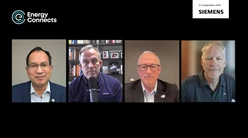Nuclear energy: the reliable, large-scale, and low-carbon answer to future demand
“My teeth told me, more emphatically than my eyes, of the Hiroshima explosion,” said Paul Tibbets, pilot of the Enola Gay that dropped the first nuclear bomb.
Last week marked the 80th anniversary of the bombing of Hiroshima and Nagasaki. The use of nuclear energy was born in its crudest form – the power to destroy. That has overshadowed the technology ever since.
Today we face a tripartite conundrum: the risks of nuclear weapons use seem higher than at any time since the end of the Cold War, yet the need for peaceful nuclear power is greater, and innovation is bringing new promise. If nuclear fission had first been developed in peaceful times, its path and associations might be very different.
Dominance of light-water reactors
The dominance of light-water reactors (LRWs) today is partly an outcome of military decisions. LWRs were favoured for nuclear submarines by the architect of the programme, Rear Admiral Hyman Rickover. Without that, gas-cooled or heavy water-moderated reactors might have become the preferred design. They have advantages in efficiency and the management of “nuclear waste”, much of which could actually generate energy in other reactor types.
The export of US nuclear power technology under the “Atoms for Peace” programme came after the USSR tested its first nuclear weapon in 1949. President Eisenhower anticipated that the Soviets would offer nuclear reactors to potential allies, and wanted to forestall them.
Subsequently, the Non-Proliferation Treaty of 1968 recognised signatories’ right to the peaceful use of nuclear energy. It has been fairly successful in its key aim: only five states have acquired nuclear weapons since, of which only one was an NPT signatory (North Korea), and another of which later gave up its nuclear arsenal and joined the NPT (South Africa).
But we seem to be entering a more dangerous zone. Ukraine gave up nuclear weapons stationed on its soil in return for security guarantees under the Budapest Memorandum of 1994. Russia’s assault, and the lukewarm support for Kyiv, show these guarantees to be hollow. A nuclear-armed Ukraine would not have been attacked.
More recently, two nuclear-armed states, Israel and the US, attacked sites in Iran which were under monitoring by the International Atomic Energy Agency. The US had in 2018 withdrawn from an agreement to limit Iran’s nuclear activities.
The strikes may have set back Iran’s enrichment activities, by how long is unclear, but have raised popular support in Iran for acquisition of its own nuclear deterrent. If that happened, other regional states – notably Saudi Arabia and Turkey – would undoubtedly feel the need to nuclearise. In addition, the East Asian nations of Japan and South Korea, may also acquire their own weapons.
The global nuclear landscape
Yet in the face of such grim prospects, the peaceful side of nuclear energy is also needed more than ever. As climate changes worsens, bringing its own geopolitical and security threats, the boom in renewables and batteries brings a near-zero carbon electricity system into sight for the first time. France has been operating a low-carbon power system based on nuclear for decades. In 2024, 68 per cent of its electricity came from its 57 reactors, and a further 27 per cent from renewables.
This contrasts sharply with Germany, where outdated Cold War anti-nuclear attitudes combined with Japan’s 2011 Fukushima accident to force a hasty nuclear phase-out. The European energy crisis in 2022, combining Berlin’s reliance on imported Russian gas and dirty domestic coal, showed the folly of this approach.
Renewables may dominate future energy systems, but nuclear can have a strong secondary role, especially in countries such as South Korea and Japan where terrain and land availability constrain solar and wind installations. China has by far the world’s biggest new-build nuclear programme, and has managed to bring down costs by scale and standardisation. China, Russia and South Korea are competing alongside traditional providers such as France to offer reactors to new markets, ranging from the UAE, Turkey, Egypt, Pakistan and Bangladesh to future clients such as Saudi Arabia.
The UAE’s pioneering role
In the Middle East, the UAE’s combination of successful solar and nuclear programmes has sharply reduced gas use in electricity generation. Rising projected electricity demand in the US for data centres has revived interest in nuclear power, even though it may arrive too late. Diversity in power generation will help cover for periods when weather is unfavourable for renewables, such as the famous “Dunkelflauten”, periods of cold, still, dark weather in northern Europe.
Recent and planned nuclear installations in Western countries tend to be horrendously late and over-budget. This is partly from an ingrained failure to build anything large successfully, partly because of over-engineering, itself stemming from fears of nuclear accidents and radiation.
These struggles in Europe and the US have, in a more positive way, spurred a return to nuclear innovation. Dozens of small modular reactor (SMR) designs have been proposed, and some are making their way towards deployment. They promise faster installation, greater safety and flexibility, and – once manufactured at large scale – lower costs. Many are based on traditional light-water models, but others include molten salt, sodium or gas cooling.
The future nuclear power sector looks much more diverse, in technology and geography. This will raise again concerns over safety, weapons proliferation and geopolitical rivalries. But it also promises electricity which though not cheap, is large-scale, reliable and low-carbon, the power to create, not destroy. Eighty years on from Hiroshima, the task for nuclear advocates is to navigate this complex landscape, deliver on the technology’s promise, while ensuring the first nuclear bombings remain the last.
- Robin M. Mills is CEO of Qamar Energy, and author of The Myth of the Oil Crisis
Energy Connects includes information by a variety of sources, such as contributing experts, external journalists and comments from attendees of our events, which may contain personal opinion of others. All opinions expressed are solely the views of the author(s) and do not necessarily reflect the opinions of Energy Connects, dmg events, its parent company DMGT or any affiliates of the same.






